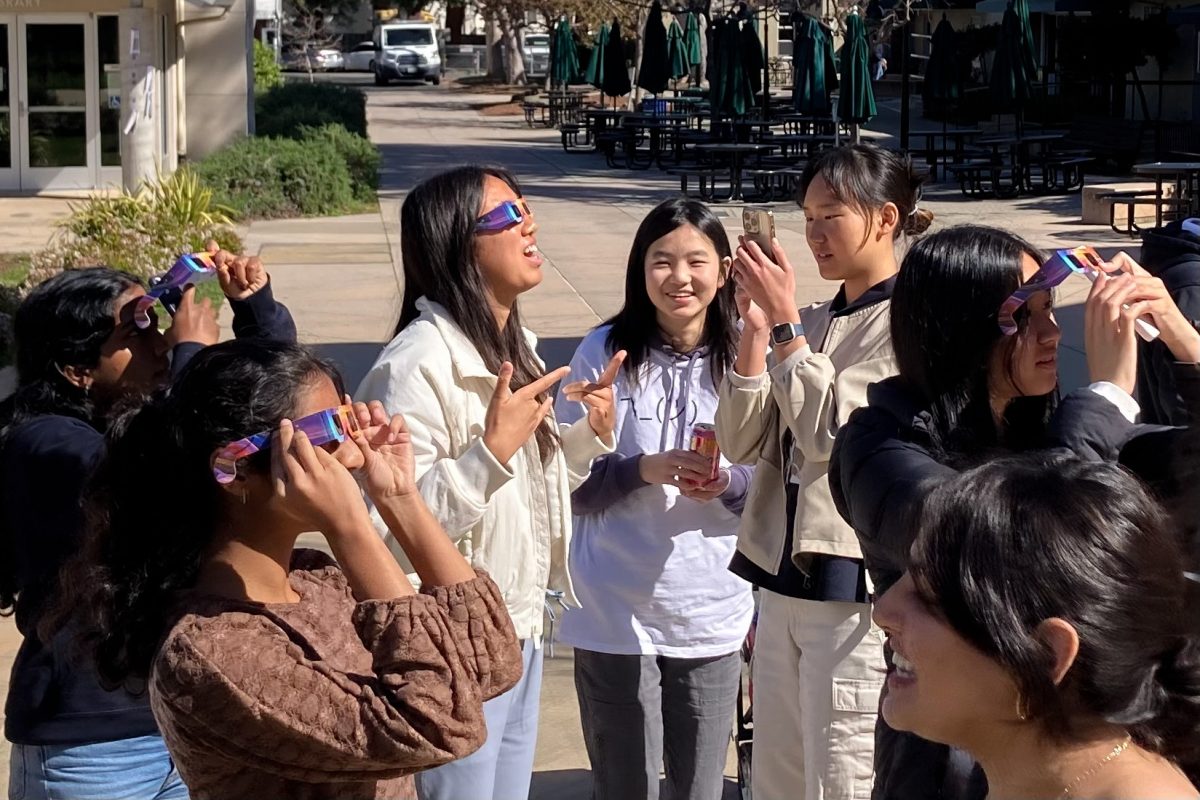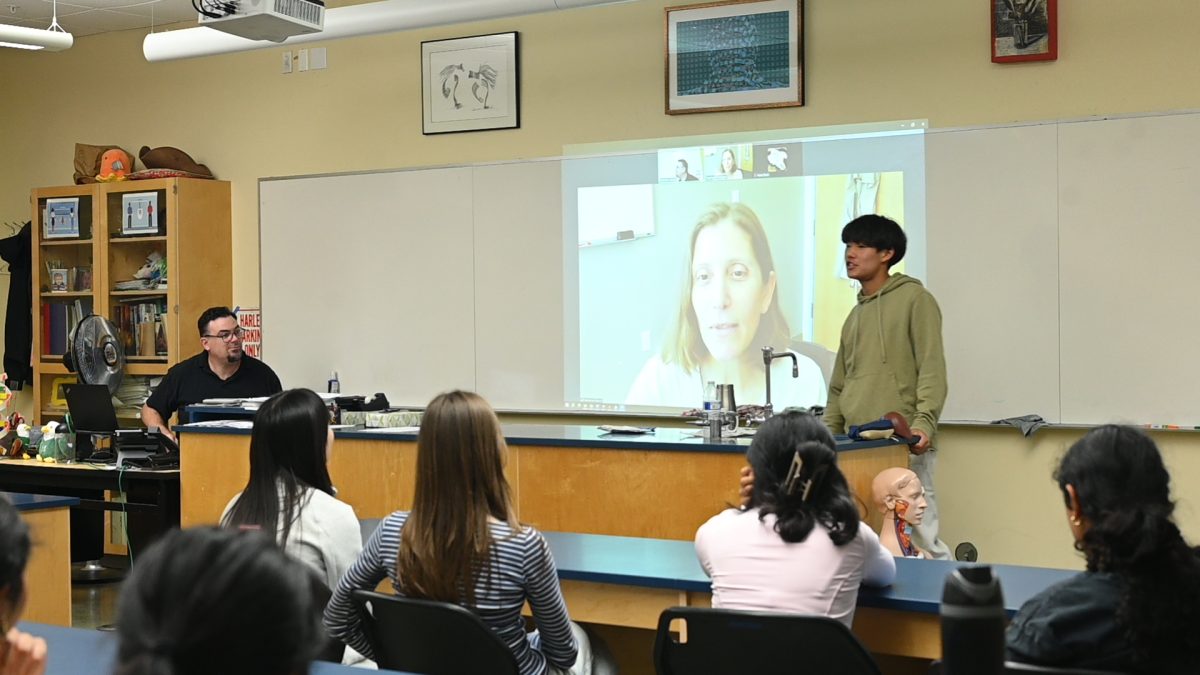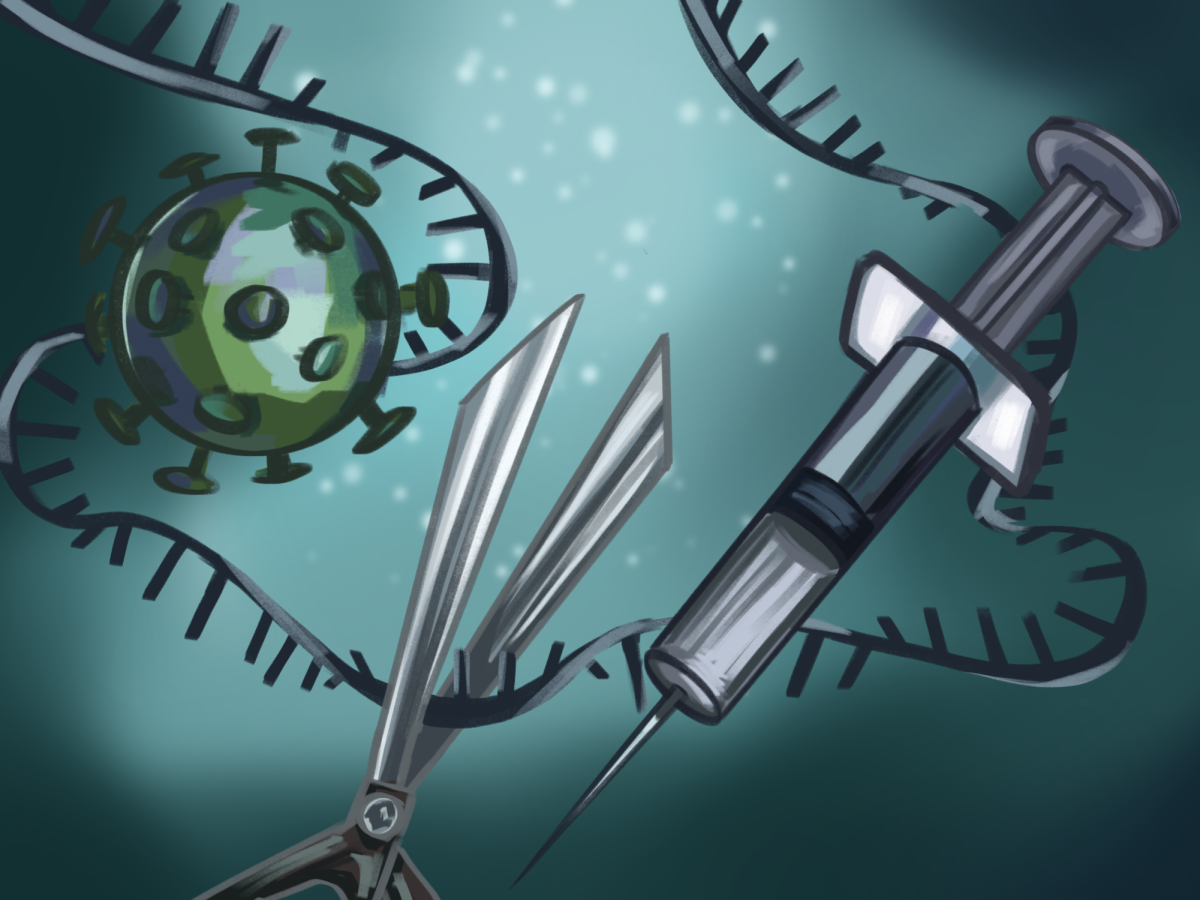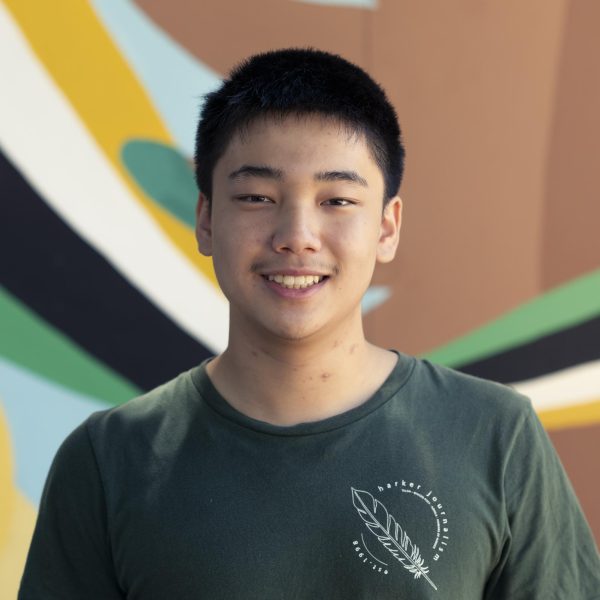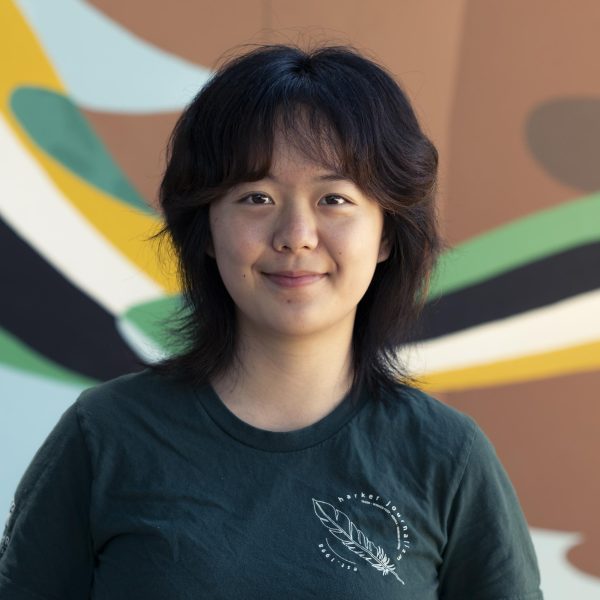Students and staff across the upper school campus gathered outdoors during lunch on Monday, with eyes, through lenses and filters, affixed to the sun. The partial solar eclipse seized the spotlight on the first day back from spring break, bringing an uncommon spectacle to the community last seen in 2017.
A solar eclipse occurs when the moon passes between the sun and the Earth as a result of an alignment of orbits. Depending on the distance between the moon and the viewer’s location on Earth, the moon can obscure the sun at different magnitudes. Observers from states like Texas, Missouri and Illinois witnessed a total solar eclipse, with the moon fully blocking the sun.
Although the path of totality of the eclipse primarily passed through the East Coast down to Texas and Mexico, viewers across the Bay Area still saw around 35% coverage, with the maximum eclipse occurring at 11:15 a.m. and ending at around 12:22 p.m. Partial eclipses occur due to an imperfect alignment between the sun, moon and Earth at certain points of view, causing only a portion of the sun to appear covered.
While taking glimpses of the sun, physics and research teacher Chris Spenner noted how crucial it is for eclipse observers to take proper precautions.
“For students wanting to witness the eclipse, protection is important,” Spenner said. “If you stare at the sun, especially through a telescope, it’s going to focus the light down to a spot in your retina and just burn through your eye.
To provide a close-up view of the eclipse, Spenner set up a telescope with a solar filter outside Nichols Hall. Dozens of students and staff gathered in the area, taking turns to get a clearer look at the eclipse.
Spenner also brought his Research class to view the partial eclipse through the telescope during Monday’s second-period class. As the students took turns looking through the filtered lens at the sun, Spenner used the opportunity to quiz his students on sunspots and other solar phenomena.
“We talked about things you can see on the sun and things that I would like for people to know just about the world around them,” Spenner said. “Often, we’re so absorbed by our daily lives, so this is a good chance to see the bigger world outside.”
Those curious about the eclipse could also view the phenomenon through a cardboard pinhole telescope set up outside Nichols. The telescope projected an image of the sun onto a surface when light passed through a tiny hole cut in the front. Astronomy enthusiast Owen White (12) commented on the convenience of a pinhole camera.
“It’s super easy to make. I’ve made pinhole telescopes like that for partial solar eclipses,” Owen said. “Pinhole telescopes are also a super fun way to view [the eclipse]. I’ve been looking forward to it all day.”
During the latter half of morning classes and lunch, math teacher Bradley Stoll and Computer Science Department Chair Eric Nelson handed out pairs of solar viewers to those hoping to take a look at the eclipse. These special glasses filter out harmful radiation from the sun, protecting the eye from potential damage.
“I’ve never actually seen a full solar eclipse and haven’t really been in the path of one yet, but this is kind of cool,” Stoll said.
The next total solar eclipse will occur on Aug. 12, 2026, with totality passing through Greenland and Northern Spain.




![LALC Vice President of External Affairs Raeanne Li (11) explains the International Phonetic Alphabet to attendees. "We decided to have more fun topics this year instead of just talking about the same things every year so our older members can also [enjoy],” Raeanne said.](https://harkeraquila.com/wp-content/uploads/2025/10/DSC_4627-1200x795.jpg)


















![“[Building nerf blasters] became this outlet of creativity for me that hasn't been matched by anything else. The process [of] making a build complete to your desire is such a painstakingly difficult process, but I've had to learn from [the skills needed from] soldering to proper painting. There's so many different options for everything, if you think about it, it exists. The best part is [that] if it doesn't exist, you can build it yourself," Ishaan Parate said.](https://harkeraquila.com/wp-content/uploads/2022/08/DSC_8149-900x604.jpg)




![“When I came into high school, I was ready to be a follower. But DECA was a game changer for me. It helped me overcome my fear of public speaking, and it's played such a major role in who I've become today. To be able to successfully lead a chapter of 150 students, an officer team and be one of the upperclassmen I once really admired is something I'm [really] proud of,” Anvitha Tummala ('21) said.](https://harkeraquila.com/wp-content/uploads/2021/07/Screen-Shot-2021-07-25-at-9.50.05-AM-900x594.png)







![“I think getting up in the morning and having a sense of purpose [is exciting]. I think without a certain amount of drive, life is kind of obsolete and mundane, and I think having that every single day is what makes each day unique and kind of makes life exciting,” Neymika Jain (12) said.](https://harkeraquila.com/wp-content/uploads/2017/06/Screen-Shot-2017-06-03-at-4.54.16-PM.png)








![“My slogan is ‘slow feet, don’t eat, and I’m hungry.’ You need to run fast to get where you are–you aren't going to get those championships if you aren't fast,” Angel Cervantes (12) said. “I want to do well in school on my tests and in track and win championships for my team. I live by that, [and] I can do that anywhere: in the classroom or on the field.”](https://harkeraquila.com/wp-content/uploads/2018/06/DSC5146-900x601.jpg)
![“[Volleyball has] taught me how to fall correctly, and another thing it taught is that you don’t have to be the best at something to be good at it. If you just hit the ball in a smart way, then it still scores points and you’re good at it. You could be a background player and still make a much bigger impact on the team than you would think,” Anya Gert (’20) said.](https://harkeraquila.com/wp-content/uploads/2020/06/AnnaGert_JinTuan_HoHPhotoEdited-600x900.jpeg)

![“I'm not nearly there yet, but [my confidence has] definitely been getting better since I was pretty shy and timid coming into Harker my freshman year. I know that there's a lot of people that are really confident in what they do, and I really admire them. Everyone's so driven and that has really pushed me to kind of try to find my own place in high school and be more confident,” Alyssa Huang (’20) said.](https://harkeraquila.com/wp-content/uploads/2020/06/AlyssaHuang_EmilyChen_HoHPhoto-900x749.jpeg)



